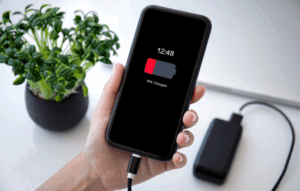Advertisements
The Dojo begins wherever you decide: jump from the couch to the homemade tatami.
Swipe and build your martial arts corner, train without excuses, and share your progress.
Advertisements
Setting up your training space
You don't need a large room to practice karate: a free area of about two square meters is enough for basic movements. Place a non-slip mat or a yoga mat to cushion the impact and protect your knees and ankles. If you don't have a tatami mat, a thick mat on a firm floor will do the trick. You can correct your posture in front of a mirror—a large mirrored wall or several standing mirrors are ideal. Keep a water bottle, towels, and a stopwatch. Light up the area well so your app's camera can detect every block and punch. Leave a exercise table Print out your lesson plans or your tablet with the selected lesson; this way, you won't waste time searching for videos on shelves. Finally, mark the center of your training square with masking tape to align yourself in zenkutsu dachi and kiba dachi—this line on the floor will help you measure distances and correct movements.
Advertisements
See also
- Fortifying tea: boost your little friend naturally
- Optimize your battery
- Your Voice and Your Stage: Karaoke Now!
- Monitor conversations: take care of those you love most
- Boost your confidence with habits that activate your little friend
Structure of your class at home
A balanced session mimics the dynamics of a dojo:
- Warm-up (5–10 min): : gentle jogging in place, neck, shoulder and hip rotations, dynamic stretching.
- Kihon (15 min): Repeat blocks of punches (oi-tsuki, gyaku-tsuki) and kicks (mae-geri, mawashi-geri). Work with a phone or app in slow motion to refine your technique.
- Kata (15 min): Practice one form—Heian Shodan or Taikyoku Shodan—for five complete repetitions, focusing on hip and guard turns after each movement.
- Imaginary Kumite (10 min): Visualize an opponent and combine attack and defense techniques; execute dodges and counterattacks without a partner.
- Cool down (5 min): Static stretches for quadriceps, hamstrings, and lower back; conscious breathing to lower heart rate.
By following this routine, your body and mind receive a complete workout: strength, flexibility, and mental agility.
Strategies to maintain motivation
Consistency is the key. Define SMART goals: specific (“practice mae-geri 100 times a day”), measurable, achievable, relevant and time-bound (one kata in two weeks). It takes a training diary where you write down the date, duration, kata practiced, and your feelings. When you review it, you'll see your progress, which reinforces the habit. Join online communities In forums or social networks, share videos and receive encouragement. Program daily reminders in your karate app so you don't forget the session. Change kata every month to avoid routine and maintain a personal challengeMemorize a new kata or record a video every week. Reward yourself for your consistency: After completing a month of training, take an active break or buy a book on karate philosophy.
Injury care and prevention
Training safely avoids setbacks. Listen to your body: Don't push yourself beyond your limits. Always take time to warm up and stretch at the end. knees and ankles, perform gentle rotations before the kihon and use minimalist footwear if the ground is very hard. Increase the gradual intensity: : Increase sets and repetitions progressively. Maintain a upright posture during katas to protect the spine. If you experience acute pain, stop practicing and apply ice or compression. Wear a basic first aid kit Closed: elastic bandage, adhesive tape, and mild painkillers. Rest for at least a full day after three intense sessions and sleep 7-8 hours for muscle and mental recovery.

Share your martial path
Your karate journey deserves inspiration. Record a short video of your favorite kata and upload it to social media with the hashtag #MiDojoEnCasa. Share the link to the app that guides you with friends who want to get started. Create a online practice groupChallenge your classmates to a weekly kata and discuss it with each other. Post progress on Instagram or TikTok stories: show off your training area, your kimono, and your progress. This way, you're not only publicly committed, but you're also spreading discipline and passion. Share this article with anyone looking for a martial art at home; together they will build a community of modern warriors, aligned with the spirit of karate and continuous improvement.




